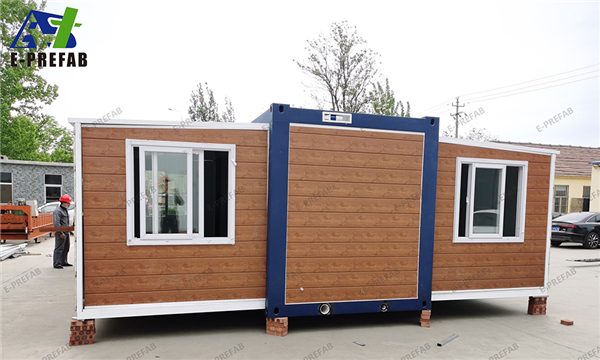A prefabricated house may look like most other modern homes, but the process to get there is rather different.
“Prefabricated simply means that it's built in a factory off-site. People sometimes confuse the terminology — modular is a term we use in the industry, it's built in sections in a factory (and) delivered to the site for assembly,” Todd Kesseler said. 20ft Container

Kesseler is the president of USModular Inc., a company that specializes in manufactured and modular housing.
Kesseler said there’s a stigma about prefab housing, and getting past that is one of the biggest challenges.
“We used to say that they were like your grandmothers’ trailers back in the day, in that they focused so much on being affordable that the quality really wasn't there. In today's pre-manufactured housing, the quality is there and they're still less expensive than site-built structures,” he said.
According to Kessler, prefabricated construction is faster and cheaper than traditional on-site construction by roughly 10% to 30%.
Those were selling points for David Lynch. He’s adding a manufactured home on top of a permanent foundation next to his own house in El Cajon.
“And everything is ready to go. So you just get the efficiency of time and then the cost is substantially less than having to do a custom build — which we've gone through before so we know how painful and how expensive it can be,” Lynch said.
There are several types of prefab housing, from one-story manufactured homes to modular apartment blocks.
Drew Orenstein is the CEO of Impact Housing, which develops modular housing complexes.
“So we take the cost savings, we take the time savings, and we translate that into what we hope to be a reduction in the rental price point,” Orenstein said.
He sees modular housing as a way to build high-quality multifamily housing in a quicker and more cost effective way.
That, he said, will improve the lives of low- and moderate-income households.
“It's everything starting from $1,500 and up,” Orenstein said, regarding the monthly rent payments for units they build.
His company is bringing more of these complexes to the region, including a potential 900 unit development in Barrio Logan.
“Two of the projects are under construction now. Another one that's a bit of a larger project — 324 units — is going to be starting constriction in the coming weeks. In terms of the larger project, we are going through the process with the city (of San Diego) to get our final approvals for that,” the CEO said.
Even with the pros of this type of construction, there are some concerns about housing for very-low income families.
“Unless you're building affordable housing and incorporating affordable housing units into every development in our community, you’re displacing folks,” Barrio Logan resident Julie Corrales said.
The state and region’s policy shift to a “build-now” approach has begun to open the doors for more prefabricated housing in the county.
In fact, a modular housing manufacturing facility is coming to the Imperial Valley next spring and is expected to serve San Diego County.
Pete Gombert co-founded the company, called indieDWELL.
“We can build it with labor that have a great job living where they are, and then ship the units to a high cost market,” Gombert said. “That tends to bring the cost of housing down anywhere from 10% to 40%, depending on where we are delivering to.”
He said a perk of modular housing construction is that it can come in all shapes and sizes — so it also works for smaller units to shelter those experiencing homelessness.
“Those units are about 380 square feet, they're studios. We’ve actually got a 260 square foot micro-studio that we do,” the indieDWELL co-founder said.
Some projects could be up to seven stories, due to their company’s use of steel frames instead of wood, with bigger units.
“We’ve got some larger projects where we're doing two or three bedrooms that are 960 to 1100 square feet,” Gombert said.
Regardless of the size, financing prefabricated developments can be an issue — partly because it’s a new industry in the U.S. and there aren’t many developers.
“It'll be easier the longer we go, (and) the more builders of this type there are out there," said Shawn Harris of San Diego Commercial and Business Financing. "I would say with this type of asset, this type of project you're going to need a lot of help from the city so that deflects some of the risk for an investor.”
Back in El Cajon, the speed and savings of getting a prefabricated home are allowing Lynch to list the unit under market value, with a young family in mind.
“A one-bedroom, two-bedroom place to rent is already expensive — it's ridiculous. So the families need a bit more space. This is a three bedroom, so they have capacity to grow with a couple of kids,” Lynch said.

Container Home Amid a housing crisis that has taken the hardest toll on low and middle income earners, backers of prefabricated housing say it offers a glimmer of hope: to provide a quality home for rent or purchase at a lower cost, that can be move-in ready in a fraction of the time.